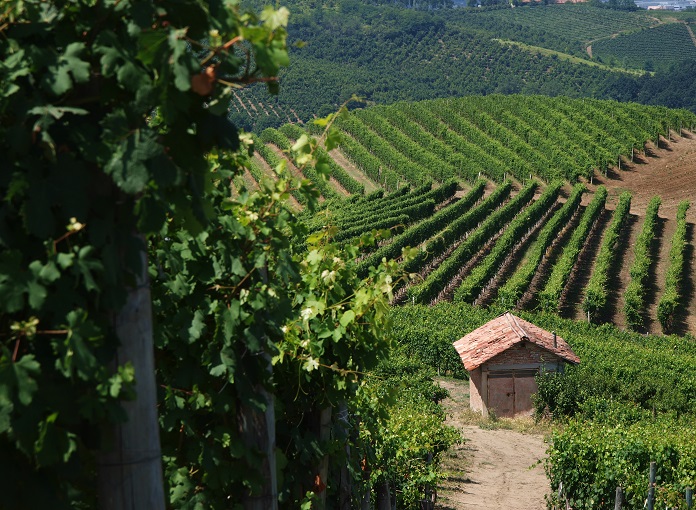In the small town of Asti lies a centuries-hold rich history of wine that is living a renaissance. United under the Consorzio Barbera d’Asti and vini del Monferrato, 342 wineries maintain the tradition of the region while giving a new interpretation to the Barbera, showing it not only as a young and easy to drink red wine, but also with ageing potential and the ability to adapt to a variety of methods of production.

The Barbera grape is characterised by deep color, full body, low tannins and high levels of acidity. These lead the wine to be easily drinkable, but also capable of expressing its increased complexity with a longer ageing period like in the Barbera d’Asti Superiore DOCG. To better propose this dual vein of the grape, the Nizza DOCG was created in 2016. Previously a sub zone of the Barbera d’Asti DOCG, the Nizza DOCG requires a 100% use of Barbera grape and at least 24 months of ageing, 12 of which in wood barrels.

The flavours move toward candied fruits and sweet species, while achieving a high alcoholic degree, the drinkability does not weakens thanks to the persistent acidity. The spicy notes take the central stage in the last step of this crescendo with the Nizza Riserva DOCG, which requires further 12 months of ageing in wood barrels.

The Barbera d’Asti, Barbera d’Asti Superiore and Nizza are only three of the 13 Protected Designation of Origin under the Consorzio Barbera d’Asti and vini del Monferrato, which counts around 30% of the land dedicated to viticulture in Piedmont.
The territory of Monferrato, which legend says its borders were drawn by the 3-days and 3-nights long ride of Aleramo and his a brick (“mun”) shod (“frrha”) horse, is home also to a wide variety of vineyards. The local use of the barbera as a young and drinkable wine is reflected by the relevance of wine cooperatives in the areas, having had a central role in the past, they continue to be focal points for their communities. Example of this is Terre dei Santi, which introduced a quality competition between its 160 members to ensure the highest level of production.

This vast local demand left room for other wines of the regions to shine abroad, but, in the 80s a group of entrepreneurs started to innovate and excel both in the vineyards and the cellars. Working in symbiosis with inventive packaging design, Bonzano Vini is representative of the will to bring a breath of fresh air to the area.

Last, but surely not least, there is the third interpretation of the Monferrato region: being part of the UNESCO world heritage list, the hills of Piedmont grant a majestic view, especially when seen from the top of a hill, like in the case of Tenuta Montemagno. This relais offers the full array of the cellar, including one of the unexpected use of the Barbera grape in a Champenoise method.
If you are looking for an escape from the frenzy of Milan, or you are deciding on the destination of your next holiday, an immersive experience in a village of the Monferrato area will allow you to travel 500 years in the past through wine, food, architecture and culture.
Andrea Marec